Our bodies grow and change with each passing year, although sometimes not necessarily for the better. Especially at the crucial age 35, as we go through what they call “second puberty”, where our bodies face a major change for the second time. Our skin reflects our health, and these changes in our skin condition occur throughout the body – this includes skin problems.
Aging skin concerns
Aging does not just mean wrinkles – there are many other aging skin problems that we face. Let us explore some common skin problems that we might face as we approach the age of 35 – 40 years old, along with available treatments and skincare products.

Sagging skin
In our youth, our skin is soft and resistant due to the skin’s ability to retain moisture. Two vital proteins in our bodies give the smooth and youthful glow of our skin:
Collagen (main structural protein):
Found in abundant amounts throughout the body among the connective tissues, keeping the skin resistant and tight.
Elastin (elastic protein):
Provides the ability for skin to stretch and bounce back to its original position.
To maintain skin resistance, these two proteins are produced at a constant rate in our bodies. However, production of collagen and elastin naturally decreases as the years’ pass. This means that our skin loses its resistance and elasticity when production of the two vital proteins are reduced.
As a result, the skin is unable to retain enough moisture to keep it firm and lesser elastin would mean a reduced elasticity. Eventually, the skin will start to sag from the lack of moisture and elastin.
Sagging skin is not the only problem faced as a result of the reduced collagen and elastin. This leads us to our next problem.

Fine lines and wrinkles
Many of us would not be a stranger to wrinkles. From young, we have the idea of wrinkles instilled in us as being “old” and “unsightly”.
What are wrinkles?
They are actually skin creases and can tend to get rather prominent, especially as the years catch up with us. There are two forms of wrinkles:
Dynamic wrinkles:
These are temporary ones that form when you use a muscle, for example, turning your head. They disappear after you revert back to the original position.
Static wrinkles:
These are here to stay and are usually attributed to the aging of the body.
Causes of Wrinkles
Age
Wrinkles can appear for a variety of reasons, with the most common reason being age. As said above, our skin loses its resistance when collagen and elastin production is reduced. Eventually, our skin becomes loose and starts to sag, resulting in skin creases that we call wrinkles.
Movement
Movement is another reason why we get wrinkles. As we move, our skin stretches and relaxes and forms dynamic wrinkles. When in our youth, our skin is able to bounce back easily, but over time and loss of vital proteins, the skin doesn’t quite return to its original position. Furthermore, constant movements would eventually result in “wear and tear”, where skin located at joints become thinner and looser. This is where sagging and wrinkles occur as well.
Sunlight
Sunlight exposure is another reason for the appearance of sagging skin and wrinkles. The ultraviolet (UV) rays in sunlight break down the two vital proteins in our skin, collagen and elastin.
- When this happens frequently over long periods of time, the skin becomes thinner as collagen and elastin production decrease.
- When the skin becomes thin, it loses its original elasticity, resulting in loose skin and wrinkles.
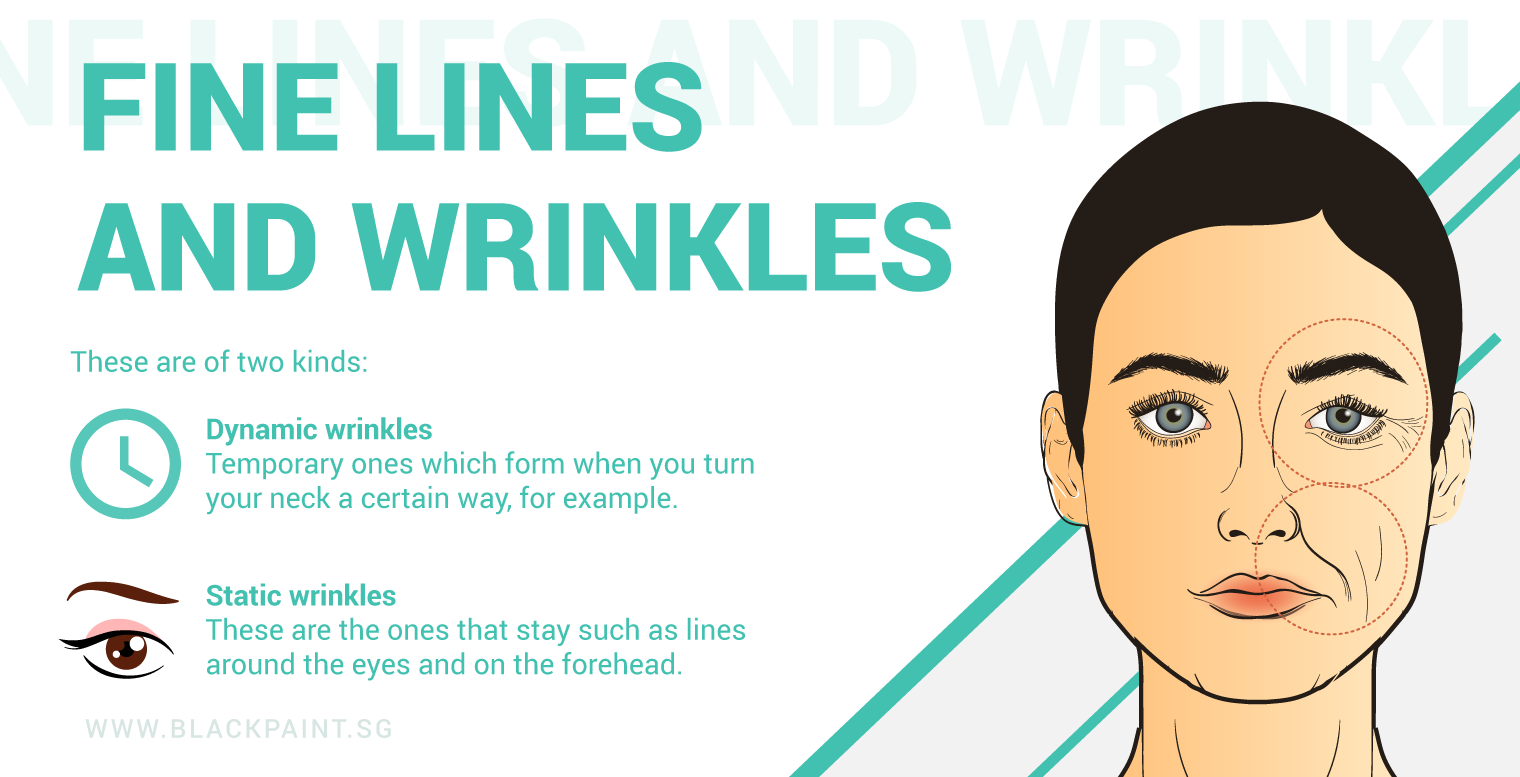
Aging wrinkle sites
Below is a list of some common wrinkles sites often associated with aging:
Crow’s feet
Also known as “laugh lines”, these wrinkles are located around the corner of your eyes, where the skin crinkles as you smile.
Worry lines
They come in the form of creases in the forehead and are sometimes called “forehead wrinkles”.
Frown lines
Similar to “worry lines”, “frown lines” appear on the forehead as well but are usually between eyebrows. You’ll be able to see them if you frown, hence the name.
Eye wrinkles
Unlike crow’s feet, these eye wrinkles are specifically located under the eyes due to the thin nature of the skin found in the area, making it a vulnerable place for stubborn lines to form.
Necklines
Another name for necklines is “turkey neck” and are basically neck wrinkles that are often formed due to a lack of proper skincare, and the fact that the neck is a joint where movement is frequent.
Common treatment protocols for wrinkles and saggy skin
There is a wide variety of skincare products targeted at wrinkle care and elimination. With products claiming to reduce or prevent wrinkles, skincare products are usually the first line of defence for most people.
Botox
A fairly common method used to remove wrinkles, a neurotoxin called Botulinum toxin is injected into the human body in small concentrations to temporarily paralyze facial muscles. This causes the reduction in wrinkles. These usually last up to 3 to 4 months after the injection, and some clients go for repeated procedures to maintain the smooth skin texture.
Fillers
True to their name, fillers are injections of gel either made of collagens, sugar molecules or fat. These injections help to fill in the loose areas under the skin and give a fuller, smoother look. The effects last about 6 months, depending on the filler and your skin condition.
Laser skin resurfacing
Sometimes known as lasabrasion, laser skin resurfacing aims to reduce wrinkles from the face by removing some outer layers of the skin through short, direct beams of light at the skin. The removal of these outer layers induces the reduction of skin conditions such as wrinkles.
There are several types of lasers that are used to treat wrinkles, with the most common being CO2 lasers or erbium lasers.
Recovery from this cosmetic procedure usually stretches from a couple of weeks to six months, depending on the skin condition of the person. Some side effects may also include scarring, burns and risk of infection. However, some do prefer this method as it has been shown to have positive results.

Age spots
Some of us may notice what seem like brown or discoloured spots on our skin appearing as we age. Usually found on the upper body region such as the face, arms and hands, these spots may come in different sizes. These hyper-pigmented spots are what we call “age spots” or “sun spots”.
Sun exposure
Sun damage is one of the many factors that cause age spots, as well as aging. They form when an excessive amount of melanin is produced in one area of the skin, becoming “clumped” and appearing as hyperpigmented spots.
Exposing our skin to the UV rays of the sun increases the production of melanin. Cells that produce melanin, melanocytes, become hyperactive and overproduce melanin. With constant exposure to the sun over the years, it leads to an overproduction of melanin in the skin that causes age spots to form.
Aging process
Age is another factor in this skin condition. As the body ages, it affects the regulation of melanin production and can contribute to the formation of age spots. Age spots are also common in middle-aged people as hyper-pigmentation occurs with age.
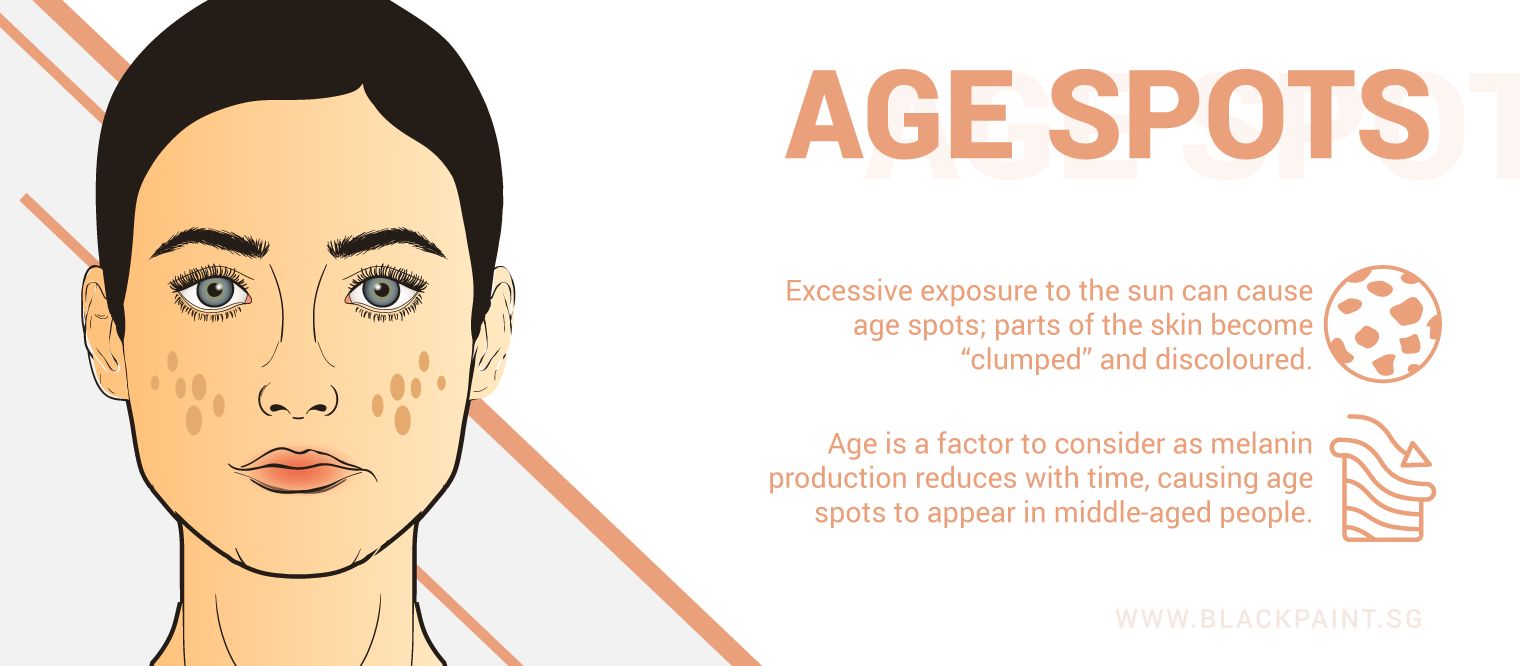
Common treatment protocols for age spots
Usage of skincare products
There are skin-bleaching products available in the market that promises to lighten or remove age spots. Most of such skin-bleaching products usually contain an ingredient called hydroquinone, which is approved for use in cosmetics but has been found to have some harmful effects.
Despite this, products containing hydroquinone claim the harmful effects are minimal and continue to remain popular among beauty consumers. Such products might take up to several months to fade age spots and sometimes may have some side effects such as redness and irritation.
Laser treatment
Laser treatment, similar to skin resurfacing laser, also involves concentrated light beams directed at the age spots. Lasers go underneath the skin to destroy melanocytes (melanin-producing cells). This does not hurt your skin surface, but side effects such as skin discolouration exist. Results may take months to show, and some people require several sessions for maximum results.
Dermabrasion
Dermabrasion may sound painful. This surgical procedure scrapes off the top layer of your skin. A quick rotating brush wears away at the surface layer of your skin, leaving a smoother layer behind. The skin would also be red and raw for some time before healing.
Microdermabrasion is a similar procedure, but it is not surgical. It is less demanding on the skin and a popular replacement for dermabrasion. However, both hold the risk of scars and redness after the procedure.
Cryosurgery
Cryosurgery freezes your age spots. Usually performed with liquid nitrogen as the freezing agent, cryosurgery aims at small amounts of age spots. The agent is applied directly to pigmented areas, freezing them and causing the hyperpigmentation to peel off. Simply put, they induce a condition similar to frostbite onto those areas, destroying the discoloured cells. Lightening occurs when the affected area begins to heal. The risks here, however, include skin irritation and permanent scars.
Chemical peel
Chemical Peel involves slathering acid over it, burning away the outer skin layer to remove it. As it peels off, age spots will follow suit, leaving a new smooth and blemish-free skin layer to form underneath.
Expect to have peeling skin for at least two weeks as the destroyed skin layer is slowly removed. Some redness and swelling are common, and there is a risk of scarring with this method.

Broken capillaries
There are actually two types of conditions that involve broken capillaries, but they are often mistakenly classified into the same condition. Varicose veins and spider veins may be caused by similar factors, but have slight differences in appearances.
- Spider veins tend to be smaller and appear as “webs” or fine lines.
- Varicose veins, on the other hand, are larger and often seem swollen and distorted.
They usually appear blue in colour and are commonly found on the legs, while spider veins appear red, purple or blue and are usually located around the facial area and upper area.
How broken capillaries happen
These conditions usually arise when a blood vessel malfunctions. As we know, veins transport blood from the body to the heart. Disrupting the blood flow can cause accumulation of blood in the veins.
In the case of varicose and spider veins, the affected veins actually swell, sometimes even distorting. The size of the vein and its location would usually determine if it was a spider vein or a varicose vein.

Aggravating factors of broken capillaries
The skin condition of spider veins and varicose veins is aggravated by thin skin. Factors like age and environment could cause the skin to become thinner over time. When this happens, broken capillaries are more prone to forming due to lesser skin resistance. A thin skin layer would also make broken capillaries and swollen veins more prominent against the skin.
In fact, research has shown that older people tend to have a higher risk of spider veins and varicose veins, usually over the age of 50. Women are found to have twice the amount of risk as compared to men in terms of being affected by these conditions. While these broken blood vessels do not usually pose serious health problems, many have deemed them as unsightly and sought methods to remove such veins.
Common treatment protocols for broken capillaries
Laser treatment
The most common treatment for broken capillaries, laser treatment destroys the prominent blood vessels which would then fade below the skin. Intense light beams are directed at the affected areas to cut off blood flow.
Over a few sessions, these blood vessels are completely eliminated, leaving behind a clear skin surface. There might be some temporary side effects to the cosmetic procedure, usually redness and swelling.
Surgery
For varicose veins, some people might choose to have surgery to remove these problematic veins. However, these veins tend to come back sometime after the surgery. Surgery usually involves having to remove the affected blood vessel or tying it off.
The medical professional might recommend this surgery to those whose conditions have led to some form of health problems, but people have done it for cosmetic reasons.
Compression stockings
Usually used for treating varicose veins, these elastic support stockings aim to help reduce the symptoms of the condition. Although they do not remove the affected blood vessels, the stockings can improve some of the swellings that come with varicose veins. People usually get such stockings from a proper medical supplier as a measurement is required to fit the conditions of the legs for maximum healing.

Dry and rough skin
Skin renewal rate
In order to keep the skin healthy and smooth, our body maintains a cell cycle that usually lasts around 28 days. This is often known as the cell renewal process, as the removal of dead cells on the surface of our skin through flaking or washing so that replacement by new cells can occur.
Our cell turnover rate actually decreases as we age, prolonging the cell renewal cycle. When this happens, dead skin cells accumulate on the surface and new cells take a longer time to reach the topmost layer, hence leading to a rough and dull complexion.
Loss of lipids
As mentioned above, aging causes the body to undergo changes such as affecting production levels of certain substances. One such substance is lipids, or essential fatty acids. These fatty acids are vital to skin health as they form a protective layer over our skin that retains moisture but yet protects it from external irritants.
When the years pass, it naturally reduces the production of lipids, leading to a lack of essential fatty acids in the skin. This, in turn, results in a dry skin that is more vulnerable to environmental factors with a higher risk of additional skin issues.
Rough and dry skin not only looks unhealthy but could also possibly result in several other skin problems. Some include red and easily irritated skin, excessive flaking and even bleeding in extreme cases.

Common treatment protocols for dry and rough skin
Usage of skincare products
There are hundreds upon thousands of skincare that claim to moisturize your skin for long, lasting hydration, catering to different skin types and age groups. They come in the forms of creams, face mists and many more. Some popular ingredients used in these products include hyaluronic acid and glycerin.
Hydration
Hydration is essential for skin health and is crucial in healing dry and rough skin. Proper moisturizing of skin would also prevent other skin issues that may arise due to dry skin, such as itching or flaking.
Change the way you bathe
Bathing too much or too long usually results in excess skin surface layer being washed off, so try having shorter baths. Instead of using hot water which tends to remove natural body oils, switch to warm water that is less severe on the skin. Choose a gentle soap for your skin as well as harsh soaps would aggravate dry skin.

Natural remedies and alternatives as treatment
While most of the common procedures may seem viable and effective, there are still some risks involved. That goes specifically for cosmetic procedures as most of them carry a risk of permanent scarring, and the effectiveness of these methods depends largely on your skin condition and the skill of the attending professional.
Instead of relying only on the common treatment methods, you can consider some natural alternatives for treating aging skin.

Prevention is better than cure
Starting early is always the best option. Prevention methods can help to decrease or eliminate chances of such skin problems arising as you age.
Regularly apply sunscreen as a means of prevention. As mentioned above, UV rays from sunlight can be damaging to the skin, especially after long exposure over the years. Proper sun protection serves as a deterrence against several skin problems such as age spots and wrinkles.
Apply sunscreen daily as a shield against sun damage. In fact, you should renew your sunscreen throughout the day, depending on how long you spend out in the open. This can help to prevent overproduction of melanin, as well as the breakdown of collagen and elastin in the skin, to reduce the risk of aging skin problems.
Skincare routine
Sticking to a good skincare routine is usually the foundation for a healthy skin at any age. If you prefer a simple routine, just pick out the basics – namely, a good cleanser and moisturizer – and you are set for the years to come.
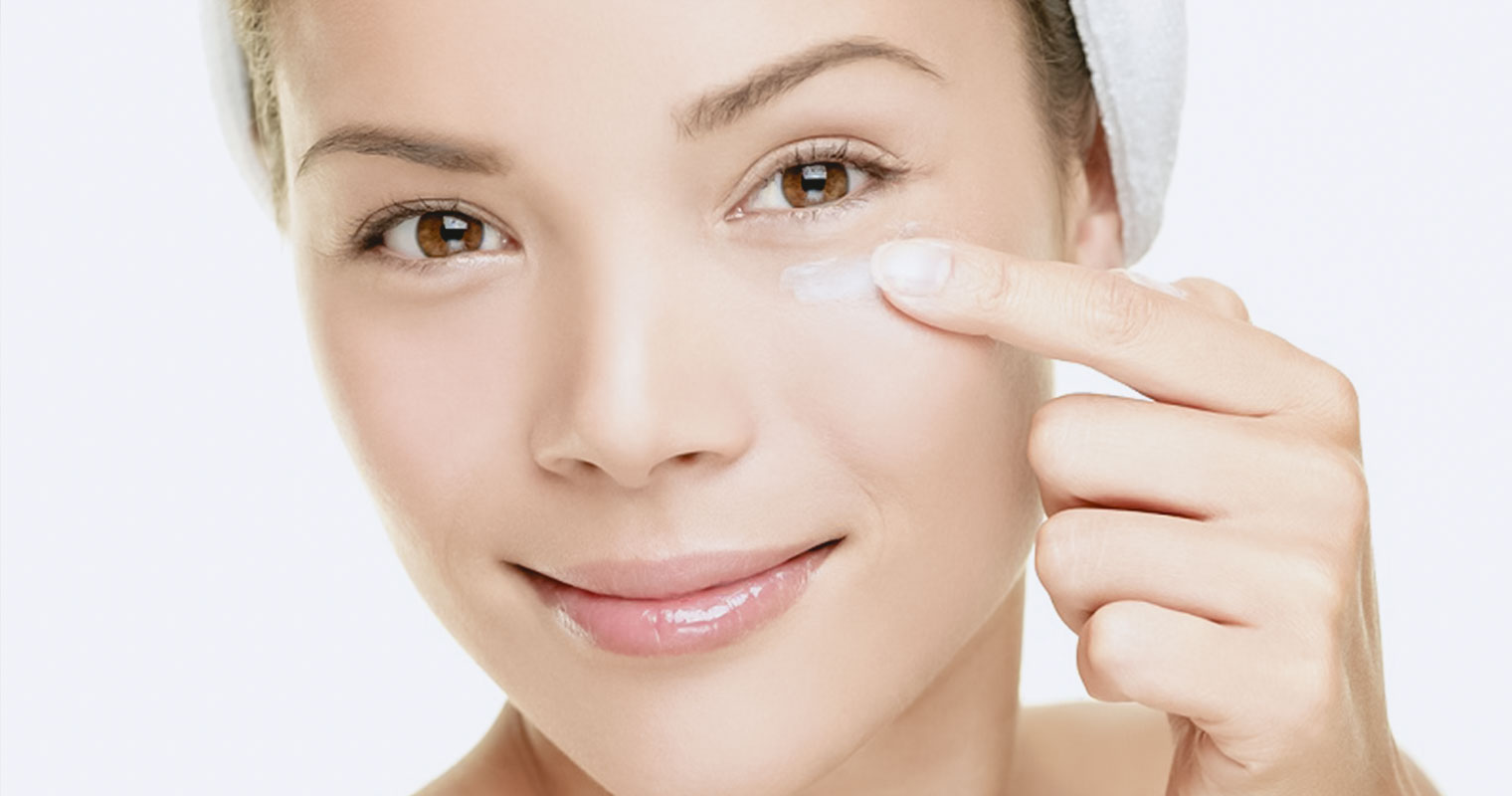
Say no to chemicals
Stick to non-chemical products for your daily skincare routine. This is important as chemical products can cause long-lasting, if not permanent damage to the skin when used over long periods of time. Products with chemicals also tend to be more drying and harsh on the skin, possibly aggravating present skin issues or causing more problems.
Below is a list of natural and healthy ingredients that you can consider adding to your skincare routine rather than chemical-packed products. They are safe for all skin types at any age and are also known for treating aging symptoms.
Aloe vera
Aloe vera has long established itself in the beauty world as a natural skin-healing and as an anti-bacterial ingredient. In a seemingly plain ingredient, it holds more than 75 active components that contribute to its anti-bacterial properties. These components include vitamins, minerals, anti-inflammatories and amino acids that help to nourish the skin.
On top of that, aloe vera is also popular for its notable skin healing abilities utilized as a natural treatment for wounds. When applied, the ingredient helps to calm down irritation and itchiness and fade redness. Due to its soothing feel, aloe vera is often used in the treatment of burns and wounds.

Coconut oil
You can apply this as a skincare ingredient or eat it as a supplement. In both situations, coconut oil comes with plenty of benefits. Containing plenty of healthy fats, coconut oil makes a great moisturizer for the skin. The anti-bacterial properties help to prevent bacteria from growing on the skin, while the antioxidant qualities of coconut oil give skin a young, healthy glow.
All these properties contribute to nourishing and strengthening the skin, especially in cases of rough and dry skin. Not only does coconut oil prevent skin aging, but it is also able to heal symptoms like wrinkles and age spots. You can use coconut oil as a moisturizer, a cleanser or even a natural skin healer in your daily routine.
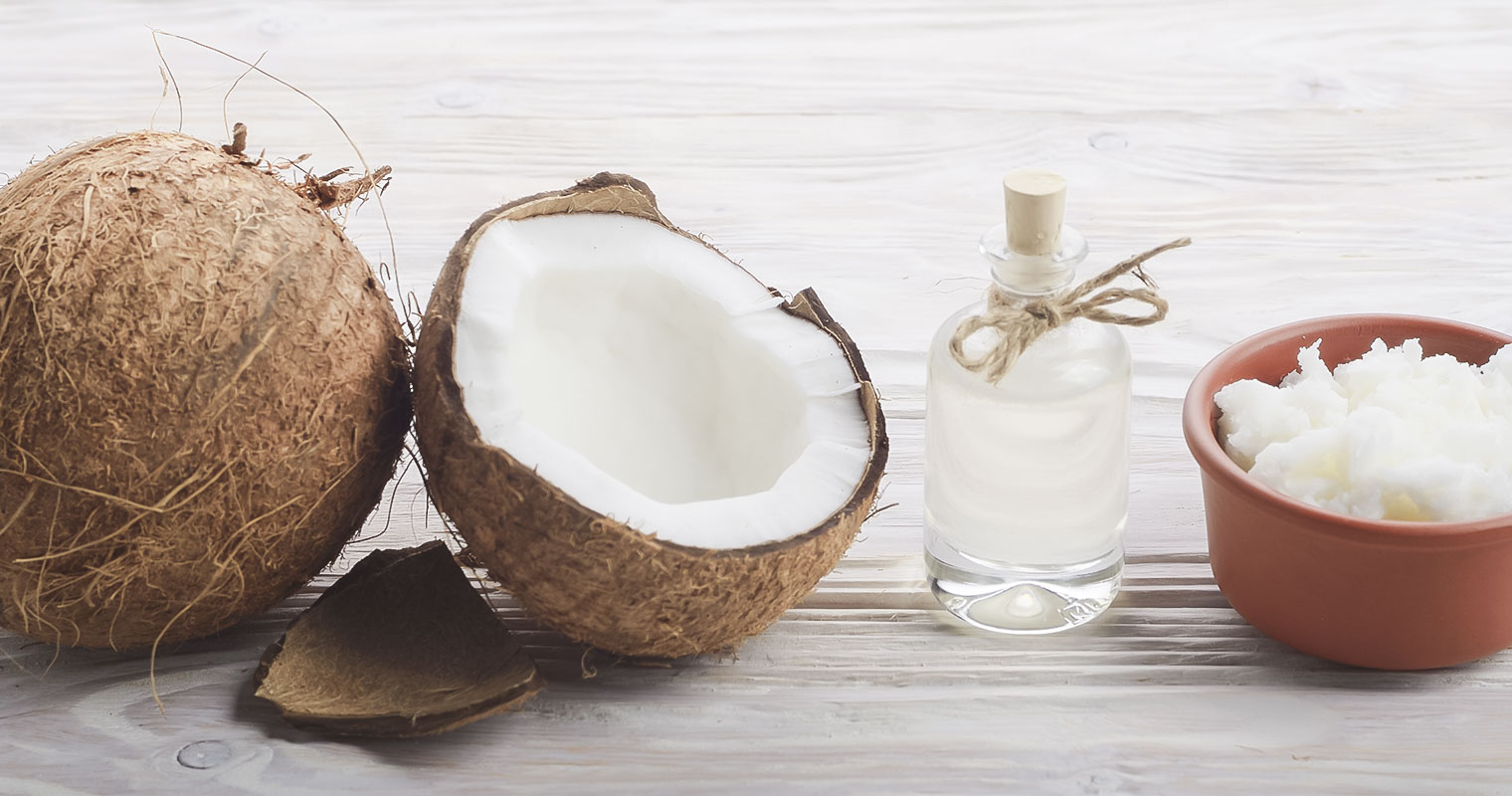
Avocado
Consider this super fruit as your first choice as a moisturizer. Chock-full of healthy fats like coconut oil, avocado also contains several essential vitamins such as A, D and E that can boost the body and skin health. These vitamins can boost collagen production to deter our naturally decreasing production levels as we age. Furthermore, avocado is known to treat age spots.
It is affordable and easy to add it to your skincare routine by just using the peel of a fresh avocado. You should also consume it to gain even more health benefits, making it truly a super fruit for the skin.

Anti-aging essential oils
Essential oils are the gems of the beauty industry among all the other cosmetic products available. Not only are they natural, whole and healthy product but they also carry many benefits for the skin to keep it in top condition and prevent premature aging.
Here are some essential oils that you might want to consider for your anti-aging regime.
Jojoba oil
Jojoba oil is extracted from the seed of a shrub called Simmondsia chinensis plant, native to Southwestern North America. Commonly used as a carrier oil, jojoba oil has plenty of benefits when used on its own.
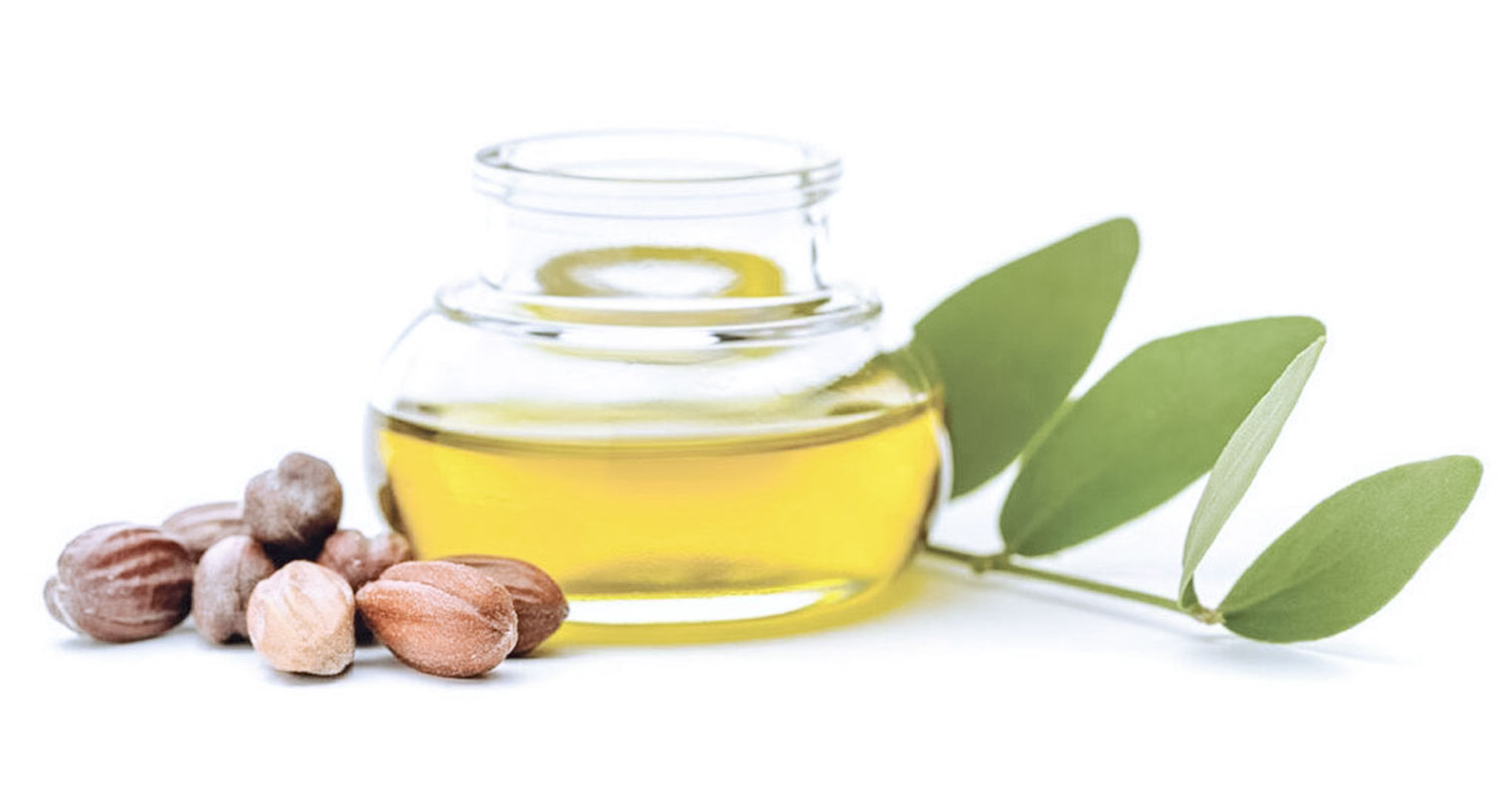
Antioxidant & anti-aging
Its active ingredients are Vitamin E, Vitamin B complex and Iodine.
Both Vitamins E and B complex act as antioxidants in jojoba oil that gives the oil its anti-aging properties.
- Vitamin E improves skin elasticity and resistance; and
- Reduces inner and external inflammation – making jojoba oil good as an anti-inflammatory oil.
- Vitamin B complex boosts skin healing and ameliorates hormonal balance.
- Iodine content in jojoba oil is what gives the essential oil its ability to heal skin.
- Iodine is also anti-bacterial, allowing for a faster rate of wound healing while also increasing collagen production.
As a moisturizer
Aside from its anti-aging properties, jojoba oil is an exceptional moisturizer that prevents irritation and dry or rough skin. Acting as an emollient, an oily layer forms on the skin surface that allows the skin to better retain water. Moreover, the essential oil shares a similar texture to our natural skin sebum, making the perfect substitution when a reduction in our natural sebum production occurs.
To use as a moisturizer, apply up to six drops once when you wake up and before you go to bed. For treating wrinkles, you may apply it directly to the affected areas.
Frankincense oil
Obtained from the resin of a tree called Boswellia carterii commonly grown in Somalia, this essential oil has been around for thousands of years. Commonly used in aromatherapy, frankincense is both inhaled and applied for its health benefits.
Benefits
When applied to the skin, the essential oil can help to treat aging skin conditions, one of which is age spots. As mentioned above, age spots are a result of years of sun damage and appear as discoloured spots on the skin.
Frankincense oil has the ability to fade these age spots and even reduce other skin blemishes. It also acts as a powerful astringent that causes skin cells to contact, hence helping to improve saggy skin when applied.
How to use
Apply frankincense oil directly to the areas that require treatment but in small amounts. It is recommended to mix six drops of frankincense oil to about 30ml of other essential oils before applying directly to the skin.

Lavender oil
Not only does lavender oil smells good, but it also carries many great benefits for your health and skin. Extracted from lavender flowers and distilled into oil, lavender oil has long established itself as one of the most popular essential oils around. You can find it in perfumes, for aromatherapy, in food and even in skincare!
How it works
A gentle essential oil, it does not irritate the skin. It helps to heal skin conditions, as well as burns and cuts due to its antimicrobial properties that keep out infections and speed up healing. This comes as a great help to the aging skin to prevent any further deterioration of the skin.
How to use
For extra nutrition and benefits, mix lavender oil with coconut or jojoba oil (both are mentioned above) and apply to the affected areas.
To heal age spots, you can choose to mix lavender oil with frankincense oil instead. This can help to reduce inflammation of the skin as well.
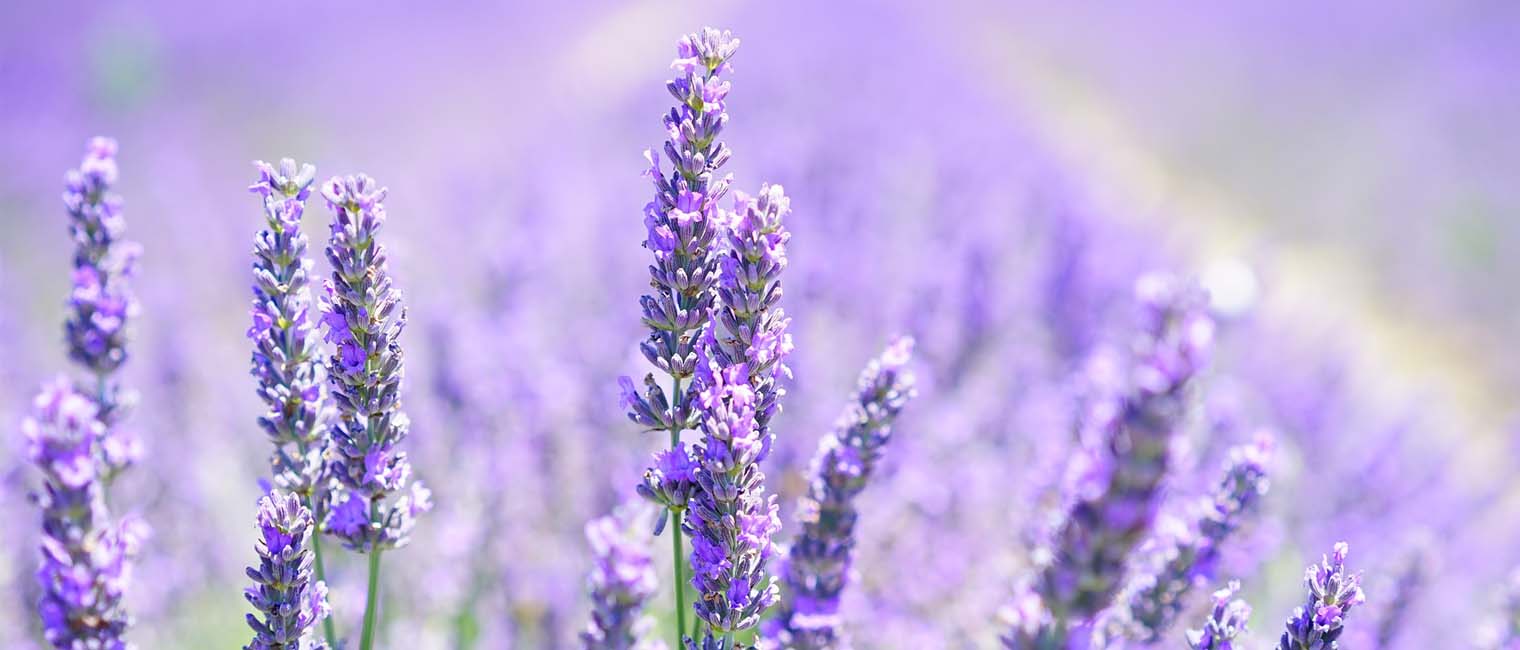
Wheatgerm oil
Derived from wheat germ, the essential oil contains many nutrients that are beneficial both to the wheat plant and our skin. Made up of 23 different nutrients such as protein, vitamin b, omega-3, it is a wonderful moisturizer for the skin. Not only so, but the vitamin E present in the essential oil also does wonders for scars and blemishes on the skin.

How it works
You can use wheatgerm oil as a natural treatment for wrinkles and fine lines. It also boosts the production of collagen to counteract our naturally decreasing collagen production in our bodies as we age.
As mentioned above, rough and dry skin is also a sign of aging. The skin easily absorbs wheatgerm oil, making it a perfect choice for fragile and aging skin. The variety of nutrients available ensures the skin’s nourishment to prevent flaking skin.
How to use
It is recommended to use wheatgerm oil as a blend due to its strong smell. Mixing with any essential oils beneficial for skin is okay. It should also be noted that no more than one-third of the blend should be wheatgerm oil. Additionally, a patch test should be done before applying to the face. The same also applies to any other essential oils and ingredients in this article.

Beyond skincare: What else can we do?
A good skincare regime with natural skincare products is not the only solution to aging skin issues. Neither is relying solely on treatments for good skin health.
In fact, lifestyle is a major factor that contributes to aging skin issues and affects our health as well. For example, smoking would speed up skin aging and cause skin problems to arise earlier.
Detoxification
Sometimes, it is not about tackling the problem head-on. It is also about taking a step back to find the root of the problem. Detoxification is one such step that can be taken as a natural treatment for aging skin. To reset the body and leave it free of the accumulated toxins would inevitably improve skin health.
Toxins, as we all know, are substances that cause many problems in the body and negatively impacts the skin. To clean these toxins out is the first step to healing the body and the skin.
Massage
One great way to detox your body would be through the art of massages. Massage therapy is not only great for relaxation and rejuvenation, but for toxin cleanses as well. One such type of massage is the lymphatic drainage massage.
The lymphatic system helps to remove toxins from cells in our body through lymph. It is a clear liquid that passes through all of the organs to carry waste away. Over time, toxins might start to clog the system and hinder the flow of lymph. This may then lead to a slower rate of waste removal. When too many toxins start to accumulate in the body, it would reflect the health condition of our skin.

Hence, to reset the lymphatic system, the lymphatic drainage massage was developed. It boosts skin health by toning and firming the skin through massage. Light, rhythmic drumming is applied to the body. At the same time, the skin is stretched in the direction that lymph would flow to the lymph nodes.
These movements help to stimulate the movement of lymph and allow for an effective waste removal. Not only does this improve skin health, lymphatic drainage massage also can strengthen the immune system.
Acupuncture
A highly recommended detoxification method is acupuncture. The traditional Chinese treatment used for generations is a way to treat and cure various ailments, as well as improving health in general. Thin, sterile needles are inserted into acupuncture points around the body – these points are chosen based on the treatment and health condition.

Diet
Diet is also a huge factor when it comes to detoxification. What we eat on a regular basis would definitely have an impact on our bodies. This brings us to our next section: what can we do to improve skin health while aging gracefully, other than skincare and treatments?
“You are what you eat”
As always, our diet takes up the highest percentage what affects our bodies. Start early by eating a proper diet to ensure you get all of the essential nutrients for a healthy body. The usual recommendations would be more fruits and vegetables while consuming lesser oils, sugars and fats. Of course, occasionally indulging in a chocolate bar or pizza is perfectly fine: after all, you worked hard for these treats!
These are some anti-aging foods you can consider adding to your diet for some extra boost:
Dark chocolate
Eating chocolate does not always have to be a guilty pleasure! Dark chocolate can provide anti-aging benefits when eaten in small amounts in a balanced diet. The high concentration of cacao in dark chocolate is where its anti-aging benefits come from, helping to lower cholesterol levels and promote heart health. Dark chocolate also contains plenty of antioxidants that improve the immune system in the body.
Do take note that dark chocolate is still high in calories, but you can feel free to help yourself to small pieces every day as a sweet yet healthy treat!

Blueberries
Most fruits are good to go on a healthy diet, but blueberries are an example of a super fruit that does wonders for the body. Rich in antioxidants called anthocyanins, blueberries can slow down the aging process of the body. One area where blueberries known to protect is the brain, reducing memory loss by guarding the brain cells from any harm.
Salmon
Not only is salmon a delicious source of omega-3 and protein, but it is also chock-full of a super antioxidant called astaxanthin. This antioxidant strengthens the immune system by preventing damage to DNA in the body while lowering cholesterol levels in the body and protecting the nervous system from inflammation. All of these abilities are crucial in slowing down the aging of the body.
This makes an excellent choice as a protein source in your diet. Explore different ways to prepare your salmon, such as baking or grilling. You could easily shred salmon to add to your salad or prepare it as a main dish with some sides for a heavier meal.

Avocado
Think fats, but good fats. Avocado contains monounsaturated fatty acids and antioxidants. These healthy fats are essential in lowering blood cholesterol, losing weight and improving skin health.
There are also plenty of beneficial vitamins present in avocado. Vitamin E can prevent premature aging due to sun exposure, while vitamin C can improve production of elastin and collagen. Combined, the two vitamins can improve overall skin health.
If you do not really fancy avocado on its own, you may wish to try it in a smoothie with other fruits! That could make a great breakfast drink or be consumed as a snack. For the avocado junkies, feel free to add it as a topping to your salads, sandwiches or just eat it as it is.

Regular hydration
When daily life gets busy, people often disregard or even forget to hydrate. Water is vital to our body health to ensure the body functions properly. It lubricates joints, conducts waste removal, regulates body temperature and the list goes on. When the body is dehydrated, it hinders natural body processes and could possibly lead to health issues, especially over a long period of time.

Not only does water keeps us in good health, but it also supports skin health. As mentioned, dry skin is one skin problem that we face as we age, and constant hydration can help to improve this condition. Water helps to remove toxins from the body through the skin, so keeping hydrated would also help to facilitate this process.
It is recommended to drink at least eight glasses of water a day for an average person. If you tend to forget to hydrate yourself, you can try drinking some water at the start of every hour. Fresh fruits with high water content can also help hydrate your body. However, to keep yourself hydrated, avoid sweet drinks and coffee. In fact, those drinks might just dehydrate your body even more due to the high sugar content and caffeine in these drinks.
Break a sweat
Exercise is another way to slow down the aging process. As most of us would know, a healthy body requires regular exercise. Get outside and go for a slow jog, or take a hike in one of our nature reserves! If not, just a quiet walk in the park would also help to stimulate blood flow and keep you energised.
Some might prefer a proper workout, such as hitting the gym or picking up pilates and yoga. Explore your options with exercising and take this opportunity to spend some time with family and friends as well.
Stretching frequently would also help to liven up your body. Especially for those of us who work at a desk for long hours or perform daily household chores, we tend to experience aches around the body such as backaches. Stretching can help loosen the tension in our muscles and allow for the stimulation of blood flow around the body.

Get enough sleep!
A proper rest at night is always the best way to recharge for the day ahead. Overall, a lack of sleep would deprive your body of the downtime that it requires to rest and remove toxins from your body. Constantly running on low sleep would eventually lead to the body crashing, starting with signs like poor memory and mood swings.
Sleep deprivation would also adversely affect skin health. With the body functions out of its natural sync due to irregular sleep patterns, skin can become imbalanced. Imbalanced skin indicates dehydration and more prone to redness, giving off a tired and dull look. Over time, not only would your skin condition worsen and seem to age faster, but your body will also constantly feel tired.

Proper stress management
We are constantly faced with stress. Our body goes into overdrive to deal with our constantly changing emotions. In fact, the first signs of stress are shown in your skin. People who are stressed often look tired and has dry skin, due to dark circles and a possible lack of sleep.
Try to set aside some quality time for yourself to rest and relax, away from the hustle and bustle of life. Sometimes, we just need some time alone. Spending time with family or friends can also relieve some of the stress by going out and having fun. Some also find the use of essential oils in aromatherapy helpful in relieving stress. Consider essential oils like lavender and frankincense.
Exercise is also a good way to unwind while burning calories. As mentioned, a slow jog or a leisure walk in the park are both great ways to exercise. Or just get outside! Research has shown that nature does wonders for your body and your mind- especially if you had spent the day at a desk staring at a screen.

In ending
As the year’s pass, our bodies would definitely undergo changes, sometimes for the better, at times not so much. Especially with age reflecting in our skin, it is crucial to start early when it comes to maintaining good health. With proper care and prevention, aging does not have to come with scary repercussions, but instead, age gracefully while keeping your youthful glow.
References
http://www.health.com/health/gallery/0,,20651745,00.html#spotted-hands-0
http://kidshealth.org/en/kids/wrinkles.html
http://www.dermalinstitute.com/us/library/11_article_Structural_Changes_AssociatAs_with_Aging_Skin.html
https://www.consumerhealthdigest.com/wrinkle-care/types-of-facial-wrinkles.html
https://www.mayoclinic.org/diseases-conditions/age-spots/symptoms-causes/syc-20355859
https://www.healthline.com/health/age-spots#risk-factors3
http://www.thrombocyte.com/causes-of-broken-capillaries-spider-veins/
https://www.webmd.com/skin-problems-and-treatments/ss/slideshow-spider-varicose-veins
http://www.americanskin.org/resource/
https://www.mayoclinic.org/diseases-conditions/age-spots/diagnosis-treatment/drc-20355864
http://www.advanced-dermatology.com.au/broken-capillaries-treatment
http://www.healthinaging.org/aging-and-health-a-to-z/topic:varicose-veins-and-other-vein-disorders/info:care-and-treatment/
http://www.todaysgeriatricmedicine.com/archive/091712p18.shtml
http://www.onegreenplanet.org/lifestyle/ditch-the-wrinkle-cream-anti-aging-properties-of-natural-oils-and-5-diy-formulas/
https://secure.herbs-hands-healing.co.uk/body-systems/skin#.Wh1kTGT1W34
https://humannaturenaturalhealth.com/treatments/cleansing-therapies
https://humannaturenaturalhealth.com/treatments/LymphaticMassage
https://humannaturenaturalhealth.com/NewsletterArticles/Spring2013/YourProteinShake
https://draxe.com/varicose-veins/
https://draxe.com/anti-aging-essential-oils/
https://draxe.com/natural-skin-care/
https://www.organicfacts.net/health-benefits/oils/wheat-germ-oil.html
https://www.livestrong.com/article/133877-skin-benefits-wheat-germ-oil/
http://www.4brancheschinesemedicinecenter.com/herbal-medicine/modern-research-ancient-practice-acupuncture/
http://www.4branchescmc.com/
https://draxe.com/anti-aging-foods/
https://secure.herbs-hands-healing.co.uk/life-stages/over-50s#.Wh0d72T1W34
https://draxe.com/exercise-help-live-longer/
http://www.cosmopolitan.com/style-beauty/beauty/advice/a42908/ways-sleep-can-mess-with-your-face/
https://www.ncbi.nlm.nih.gov/pmc/articles/PMC4082169/
https://draxe.com/stress-relievers/
https://www.healthline.com/nutrition/11-benefits-of-salmon#section6
http://healthiestfoods.co.uk/health-benefits-of-avocado







